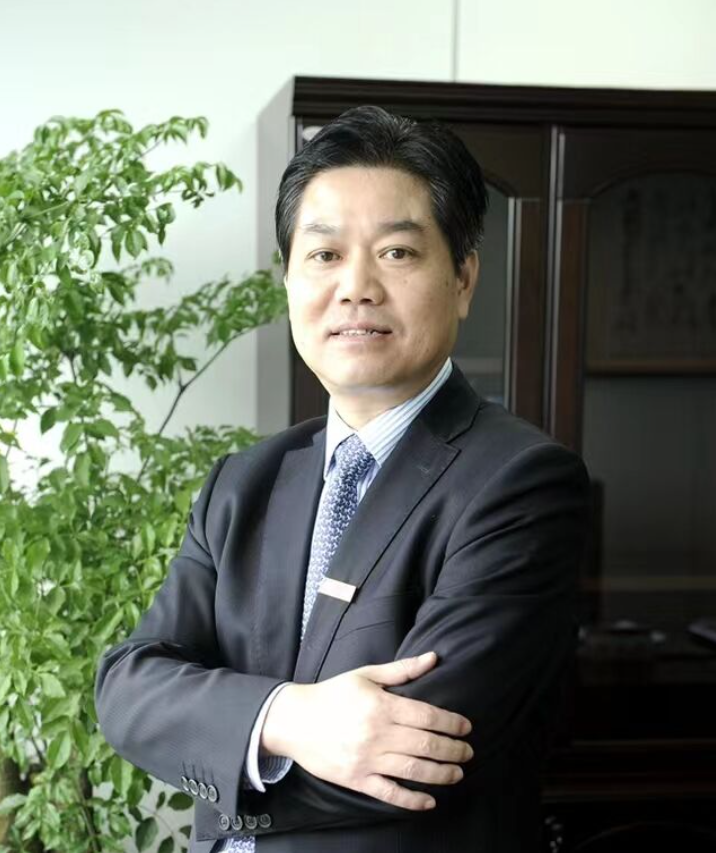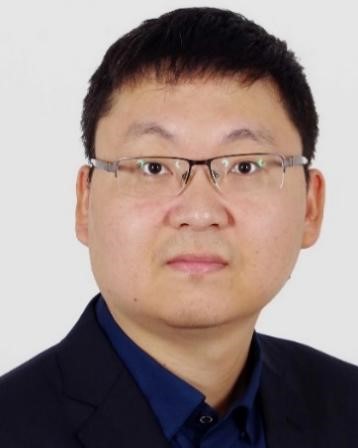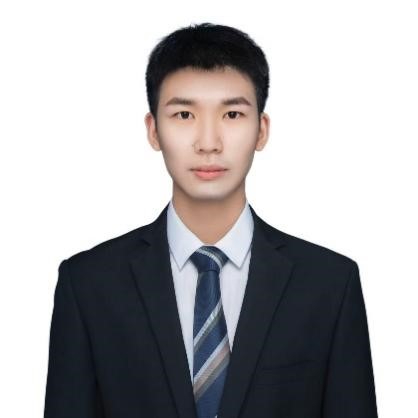Session Aims & Scope
The goal of this session is to provide a platform for international experts, researchers, and industry practitioners to exchange their ideas, share the latest advancements, and discuss challenges in the field of Digital Twin Smart Manufacturing. Through collaborative discussions and presentations, the session aims to foster innovation, promote networking, and contribute to the development of practical solutions that leverage Digital Twin technologies to enhance manufacturing theory and processes, improve efficiency, and drive sustainable growth in the global manufacturing industry.
This session invites submissions of original research papers, case studies, and innovative applications in the field of Digital Twin technologies for smart manufacturing. Topics of interest include, but are not limited to:
- Digital Twin technologies in smart manufacturing systems and processes
- Digital Twin based smart manufacturing theory
- Digital Twin based predictive maintenance for manufacturing systems
- Digital Twin based quality control and process optimization
- Digital Twin based sustainable manufacturing practices and product lifecycle management
- Digital Twin based agile and flexible manufacturing systems
- Digital twin based real-time monitoring and control in manufacturing processes
- Virtual and augmented reality in Digital Twin manufacturing environments
- Internet of Things (IoT) in Digital Twin manufacturing systems
- Human-machine interaction and collaboration in Digital Twin manufacturing processes
- Security, privacy, and ethical considerations in Digital Twin implementations
- Ethical and societal implications of Digital Twin technology in manufacturing
- Case studies and best practices in Digital Twin smart manufacturing
Session Chair(s)

Chair
Guohong Dai
Jiangsu University of Technology (China)
ghdai@jsut.edu.cn

Co-Chair
Patrick Ruediger-Flore
Department of Mechanical and Process Engineering of RPTU (Germany)
patrick.flore@rptu.de

Co-Chair
Yuan Chao
Jiangsu University of Technology (China)
chaoyuan@jsut.edu.cn

Co-Chair
Chao Tan
Jiangsu University of Technology (China)
tanchao@jsut.edu.cn
Session Presentation
1.

Lin Jiang
Associate Professor
Charles W. Davidson College of Engineering, San Jose State University (USA)
Title: Revolutionizing Smart Manufacturing and Future Workforce through Integration of Haptic Bilateral Exoskeleton Gloves and Virtual Reality in Robot Control
Abstract
This research aims to revolutionize Smart Manufacturing and the future workforce by integrating Haptic Bilateral Exoskeleton Gloves and Virtual Reality into robot control, leveraging recent advances in virtual reality technology. The goal is to establish an immersive VR system, using wearables like haptic gloves and VR suits to bridge the physical and cyber worlds. The proposal introduces an augmented tactile-perception and haptic-enabled exoskeleton wearable, enhancing interactions across real and virtual realms. Three key research activities include designing prototypes, utilizing collaborative robots for replicating workplace tasks, and enabling haptic cues for robot teleoperation. This initiative not only promises to redefine workplace interactions but also addresses global manufacturing demands, reducing strain on resources and empowering Industrial 5.0.
2.

Lang Xu
Professor
Chongqing University (China)
Title: Robot intelligent manufacturing technology in complex working conditions
Abstract
The efficient and high-quality construction of major national projects is related to the development of the national economy. With the increase in the scale of the project, the traditional construction mode in the high-altitude location will bring big construction safety risks, low construction efficiency and difficult to guarantee the project quality. Therefore, parts manufacturing and construction assembly are reshaping the construction mode of major national projects. However, the existing manufacturing mode of parts relies on a large number of manual and simple machinery, due to the large size of parts, heavy loads, complex processes, various specifications, and poor manufacturing environment, it is difficult to ensure the consistency of major engineering parts, can not meet the assembly requirements. Therefore, robotized intelligent manufacturing is the key to ensuring the high quality of major national projects. The team broke through the feature recognition and precise positioning technology in complex manufacturing scenarios, the control method of multi-source disturbance to increase stability and reduce swing, and the production planning and scheduling algorithm in complex working conditions, and formed the robotized manufacturing technology system of steel bar pieces, which was applied to the construction of many bridges.
3.

Long Bai
Associate Professor
Huazhong University of Science and Technology (China)
Title: Digital Twin-Enhanced Surface Roughness Prediction in Ultra-Precision Machining: A Hybrid Physics-Data-Driven Approach
Abstract
Achieving superior surface finish quality is paramount for the optimal performance of machined components, and single-point diamond ultra-precision machining has proven effective in attaining exceptional surface quality across a wide range of engineering materials. This research explores the challenge of forecasting surface roughness for titanium alloy workpieces subjected to ultra-precision machining by leveraging a digital twin approach. Experimental data encompassing process parameters and surface roughness measurements were collected during end-face machining trials and used to develop a high-fidelity digital twin of the machining process. Leveraging the ResNet-50 architecture, a deep learning neural network model was integrated into the digital twin to predict surface roughness. In an effort to enhance prediction accuracy, we introduce the energy ratio difference (ERD) as a stability feature, which can be derived using fast iterative variational mode decomposition (FI-VMD) within the digital twin framework. Additionally, the roughness value obtained from an analytic model was incorporated as an input feature for the prediction model. The inclusion of these two novel roughness predictors resulted in an 8.7% improvement in prediction accuracy for the proposed digital twin approach. Furthermore, the impact of tool parameters on prediction accuracy was examined, revealing that the proposed hybrid-driven digital twin model demonstrated superior robustness to tool parameter errors compared to the analytic roughness model. The digital twin’s ability to accurately predict surface roughness enables more efficient process optimization and quality control in ultra-precision machining.
4.

Guodong Liu
Associate research fellow
Beijing Institute of Technology (China)
Title: An intelligent system proposal for micro electrochemical machining based on sensor-integrated electrodes
Abstract
Aiming at the fundamental process-related issues such as poor machining localization and unclear inter-electrode processing status restricting the development of micro electrochemical machining (ECM), a novel micro ECM system based on the sensors-integrated silicon electrode is proposed. Based on MEMS manufacturing technology, the sensors-integrated silicon electrode is firstly designed and fabricated for in-situ detection of status signals of electrolyte temperature, conductivity, and so on. Based on the multi-state signal fusion analysis, the processing status detection model can be established to accurately control machining gaps. A novel multiphysics simulation enabled ‘virtual sensing’ approach is proposed to validate the chip-on-tool-based monitoring results.
5.

Meiji Cui
Associate Professor
Nanjing University of Science and Technology (China)
Title: Evolutionary Optimization Methods for High-dimensional Expensive Problems
Abstract
Evolutionary computation is a rapidly evolving field and the related algorithms have been successfully used to solve various real-world optimization problems. The past decade has also witnessed their fast progress to solve a class of challenging optimization problems called high-dimensional expensive problems (HEPs). The evaluation of their objective fitness requires expensive resource due to their use of time-consuming physical experiments or computer simulations. Moreover, it is hard to traverse the huge search space within reasonable resource as problem dimension increases. Traditional evolutionary algorithms tend to fail to solve HEPs competently because they need to conduct many such expensive evaluations before achieving satisfactory results. To reduce such evaluations, many novel surrogate-assisted algorithms emerge to cope with HEPs in recent years. Yet there lacks a thorough review of the state of the art in this specific and important area. This report provides a comprehensive survey of these evolutionary algorithms for HEPs. We start with a brief introduction to the research status and the basic concepts of HEPs. Then, we present surrogate-assisted evolutionary algorithms for HEPs from four main aspects. We also give comparative results of some representative algorithms and application examples. Finally, we indicate open challenges and several promising directions to advance the progress in evolutionary optimization algorithms for HEPs.
6.

Ying Zhou
Ph.D Candidate
Jiangsu University (China)
Title: HOA-MPC Control Investigation for Hub-Motor Electric Vehicles with Air Suspension based on Road Roughness identification
Abstract
As electric vehicle propulsion systems have matured to meet consumer expectations, the focus has shifted to enhancing vertical dynamics and comfort. The suspension systems and hub-motor setups has provided valuable insights for selecting the right system to mitigate unbalanced electromagnetic force (UEMF) in hub-motor electric vehicles (HMEVs). This study introduces a Heron Optimization Algorithm-Model Predictive Control (HOA-MPC) strategy for hub-motor electric vehicles equipped with air suspension (HM-AS), aiming to enhance ride comfort, handling stability, and reduce eccentricity between the stator and rotor. A full-vehicle dynamic model considering vertical-longitudinal coupling is established and validated. A road surface identification system based on a Physics-informed neural network (PINNs) is designed. The Self-Organizing Map (SOM) is used to optimize weight coefficients on 16 conditions, which are then saved as tables for HOA-MPC. An HOA-MPC controller is designed based on distributed prediction model, which decompose the entire vehicle into four subsystems and consider the coupling of roll and pitch. Simulation results demonstrated that HOA-MPC achieves improvements of 25% in body acceleration, 16% in eccentricity, 5% in tire dynamic load, 25% in roll, and 15% in pitch. It showcases its effectiveness in enhancing ride comfort and vehicle stability.
7.

Hengyu Lu
Postgraduate student
Jiangsu University of Technology (China)
Title: Digital twin based intelligent assembly for 3C tiny screws
Abstract
With the development of technology and intelligent manufacturing, 3C devices play an important role in life. Intelligent assembly for screws is the key to ensuring efficient production. This study applies digital twin technology to robot intelligent assembly of 3C devices. By introducing the digital twin framework, the real-time assembly data is accurately transmitted to the virtual model, enabling virtual debugging of robot assembly, saving production resources and improving production efficiency. The goal of this study is to present a digital twin based intelligent assembly system for 3C devices production lines. The contributions include establishing a digital twin system for mapping real and virtual environments of the robot assembly platform, enabling real-time data exchange between the virtual and physical environments. The data of screw semantic segmentation is transmitted to the digital twin system, which autonomously plans tasks for the robot. This study integrates digital twin theory and intelligent manufacturing approaches to achieve intelligent production of 3C devices, further promoting the development and advance of the manufacturing industry.
8.

Fu Zhongcheng
Ph.D student
Wuhan University of Science and Technology (China)
Title: Digital twin-based multi-view energy efficiency prediction framework for machining systems
Abstract
Large and extensive manufacturing systems consume a large proportion of manufacturing energy. Energy efficiency prediction is the premise of energy efficiency management. Most of the current energy efficiency forecasts are inferential forecasts based on historical data and empirical models, and once the processing environment changes, the forecast accuracy will be difficult to guarantee effectively. With the background of digital twin technology, a framework for multi-view energy efficiency prediction of machining systems is designed, the key technologies for achieving multi-view energy efficiency prediction are described, and the multi-view energy efficiency prediction method is explored. A multi-view energy-efficiency prediction platform based on digital twin technology is built, and experimental analysis of multi-view energy-efficiency prediction is conducted on the platform, and the results show that the proposed method is effective. The proposed multi-view energy efficiency prediction framework can provide theoretical and practical methodological support for green and intelligent manufacturing, and has important theoretical research and application value.